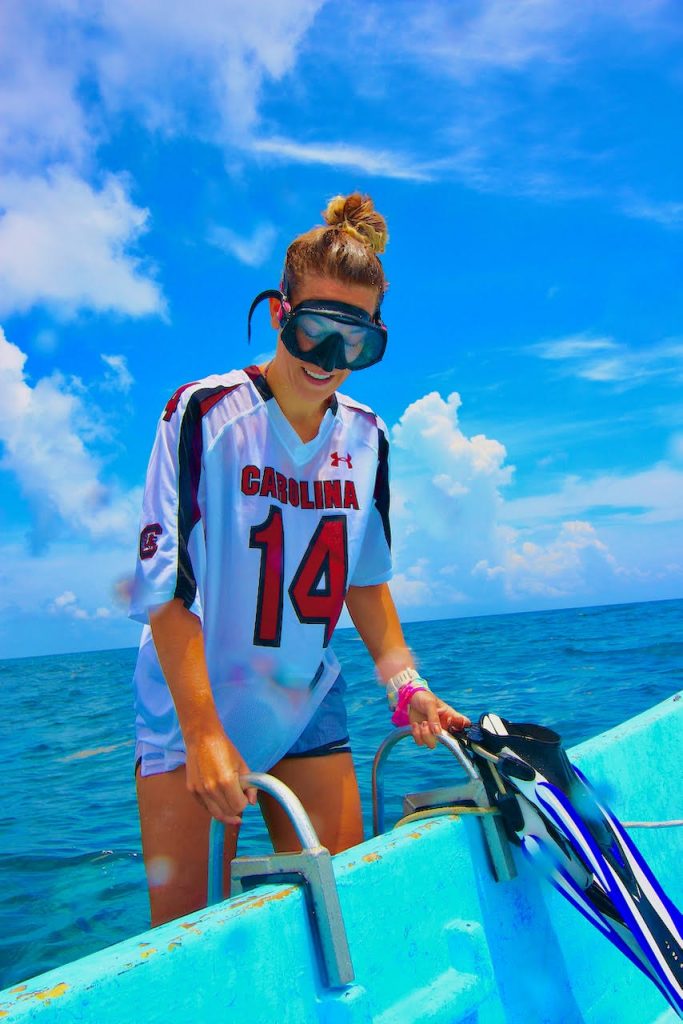PeerJ spoke to Dr. Abbey Engleman, of Florida State University, about the recently published PeerJ Life & Environment article Dead but not forgotten: complexity of Acropora palmata colonies increases with greater composition of dead coral. The article was published as part of the IABO Hub. The IABO Hub is the publishing home of the International Association for Biological Oceanography, and features the latest biological oceanography research published by the members of IABO.
 Can you tell us a bit about yourself?
Can you tell us a bit about yourself?
I am a marine scientist, technologist, and policy analyst driven to connect the dots between science, society, and environmental solutions. Previously, as a researcher at Florida State University, I used 3D technologies to reverse engineer coral structures. 3D technologies present new opportunities to understand our ocean and yield exciting potential for forging sustainable solutions. My desire to translate science to society led me to pursue subsequent positions within the U.S. House of Representatives, where I worked on the House Committee on Natural Resources and led sustainability and climate policies. I am now a Senior Consultant at Esri, where I bridge the gaps between technology and science-driven solutions. In my current capacity, I advise customers on geospatial and 3D technologies to address their climate, sustainability, and earth science needs. This role is a daily reminder that innovative applications can and will provide the solutions needed to connect science and society to address our changing climate.
Can you briefly explain the research you published in PeerJ?
Our research used photogrammetry techniques to determine whether structural characteristics differ between living and dead coral. What did you discover and where? We found that dead coral is more structurally complex than living coral.
What makes coral reefs such thriving and biodiverse ecosystems?
Our research challenges the prior notions… The conventional ecological theory suggests diversity increases with increasing habitat complexity, leading most research to attribute coral reef diversity to reef structures. While some research suggests it is the reefs’ 3D structure, other studies point to the live coral and its 3D structure. Until recently, technological limitations hindered our ability to disentangle the influence of 3D reef structures from living coral on reef processes. Our research takes a step toward separating the two. Most significantly, our findings reveal that dead coral is more complex than living coral, contradicting conventional notions about what drives ecosystem diversity. Our findings spark new questions about what actually drives coral reef ecosystem processes and whether structure alone is sufficient for ecosystem restoration. These ideas and the research avenues they inspire could have significant implications for future conservation initiatives – such as whether artificial reefs are truly conservation strategies or whether activities to preserve live coral are more influential in preserving reef dynamics. We hope this research will drive research that moves beyond structure to enhance the effectiveness of reef conservation strategies.
How did you first hear about PeerJ, and what persuaded you to submit to us?
I learned about PeerJ as an early career researcher; PeerJ’s open-access model stood out and made it easy for me as an early-career researcher to find reputable scientific research. I chose to publish with PeerJ to continue supporting open-access science. PeerJ’s high-quality peer review, global audience, and open-access publication model are key to expanding access to scientific research, increasing equitability in science, and fostering global collaborations needed to address our changing planet.
How was your experience publishing an article in the IABO Hub?
Publishing an article in the Hub was seamless. The IABO Hub provided thorough and timely peer review feedback. Overall, publishing through the Hub was an incredibly positive experience that greatly benefited our team and the quality of our published manuscript.
Anything else you would like to add?
Leaning into 3D technology is key to understanding ecosystems – and how to protect them. Now, more than ever, we have the technology to digitally recreate physical systems. This is particularly important for marine sciences, which are limited by the challenges of conducting research underwater (such as limited air and light in a wet, high-pressure environment). Applying these tools and software to address marine research can drastically expand the scientific questions we can ask, and the insights we can gain.
PeerJ Hubs are a new concept providing a sustainable Open Access solution for societies and research associations, with meaningful benefits for members. Whether your organization wants to launch its first publication, or is seeking a fully OA, funder-compliant option to complement your existing journals, a Hub could grow and develop your community, and make Open Access a more attainable and equitable option for your members.
Best of all, Hubs are free for organizations to launch!
If you are interested in discussing a Hub for your society or research association, please email [email protected] and we can send you further information.


